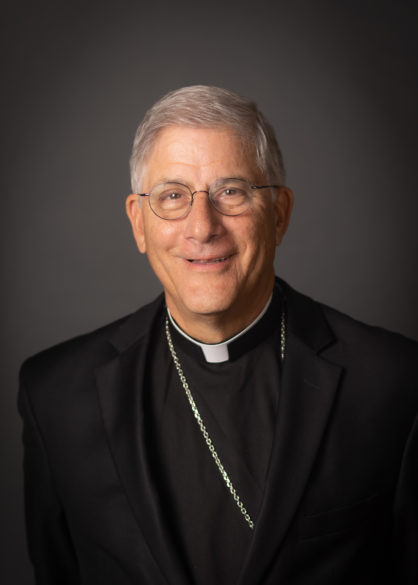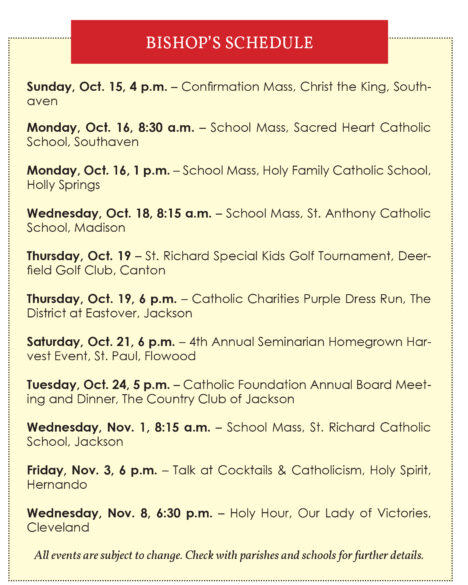By Bishop Joseph R. Kopacz, D.D.
The third phase of the Synod on Synodality began in Rome on Oct. 6 and will be in session for most of this month. In summary, recall that the Catholic Church throughout the world conducted an extensive array of processes beginning in late 2021 that invited the laity, consecrated and ordained to actively participate in the synodal journey of described as one of communion, participation and mission. That was the first phase on the local level of each (Arch)diocese.
During the second stage a committee of delegates in each continental region oversaw the development of the diocesan syntheses into the continental documents of which there are seven. These represent the voices of the faithful from the United States/Canada, Latin America, Europe, the Middle East, Africa, Asia and Oceana. The good fruit of the Holy Spirit from the first two stages in the worldwide undertaking now guides the delegates in Rome as a roadmap for discussion, dialogue and discernment. Drafted from the seven continental syntheses is the working document known as the Instrumentum Laboris. This is replete with the theology of Synodality and the process to be undertaken in stage three for three weeks this month in Rome.

It is only natural to inquire about the participants in Rome who are devoting three weeks of their lives to the third phase of the Synod process, and who will have an extraordinary voice at this time in church history. In the spirit of transparency, the Vatican on Sept. 21 released the final list of names of those participating in the upcoming Synod assembly, including laypeople who will be full voting delegates at a Catholic Church synod for the first time. The delegates are made up of representatives selected by bishops’ conferences and Eastern Catholic Churches, leaders in the Roman Curia and 120 delegates personally selected by Pope Francis. (See https://bit.ly/SynodParticipantList2023) In total, 363 people from around the world will be able to vote in the 16th Ordinary General Assembly of the Synod of Bishops, according to statistics released by the Holy See Press Office on July 7. Among them, 54 of the voting delegates are women. In addition to the voting members, 75 other participants have been invited to the synod assembly to act as facilitators, experts or spiritual assistants. (Catholic News Service Release)
The Instrumentum Laboris portrays all that the Holy Spirit has accomplished during the first two stages and reads as follows. The first phase enables us to understand the importance of taking the local church as a privileged point of reference, as the theological place where the baptized experience in practical terms “walking together.” First of all, we have experienced the joy expressed in the sincere and respectful encounter between brothers and sisters in the faith: to meet each other is to encounter the Lord who is in our midst. The continental stage has made it possible to identify and share the particular situations experienced by the church in different regions of the world. The daily hardships of poverty, violence, war and climate upheavals came into full view for many of our brothers and sisters throughout the world, especially in the Middle East and Africa.

As noted, the theme or vision for the Synod is “Communion Participation and Mission.” This understanding of the church is interwoven in the direction we have taken in our pastoral reimagining process of the church as One, Holy, Catholic and Apostolic. There is no doubt that one has to be patient with a process of listening and discerning within the word-wide church of well over a billion members.
At times there are more questions than answers, but as the Instrumentum Laboris states, a synodal church is open, welcoming and embraces all, and characteristic of a synodal church is the ability to manage tensions without being crushed. At the same time, a synodal church confronts honestly and fearlessly the call to a deeper understanding of the relationship between love and truth according to St. Paul’s invitation. “But speaking the truth in love, we must grow up in every way into him who is the head, into Christ, from whom the whole body, joined and knitted together by every ligament with which it is equipped, as each part is working properly, promotes the body’s growth in building itself up in love.” (Eph 4:15-16) To authentically include everyone, it is necessary to enter into the mystery of Christ allowing oneself to be formed and transformed by the way he lived the relationship between truth and love.
The image of the Cross comes to mind when seeking a clearer focus and a deeper understanding of the Synod process. The vertical beam of the Cross takes us into the vaults of heaven where God has revealed the plan of salvation in the Lord’s death and resurrection and where he transcends the whole of life’s transient nature. This is who we proclaim and teach. The horizontal beam of the Cross represents the daily life of the believer in every age, and the immanence of God in Jesus Christ who is with us until the end of time.
This is the realm of the Holy Spirit who works to bring about the Kingdom of God in the church and in the world. This is the hard work of the Synod which requires patience and trust as we build upon nearly 2,000 years of church history.
